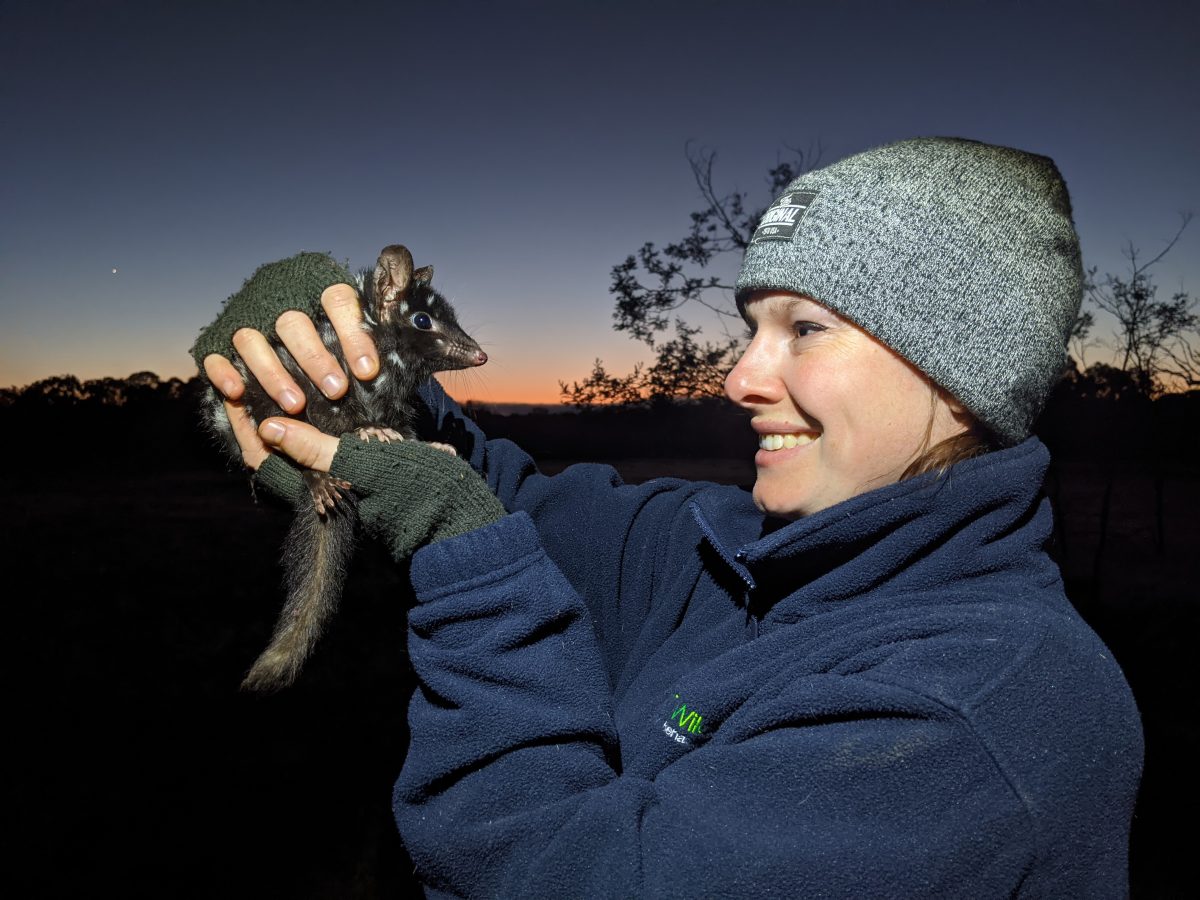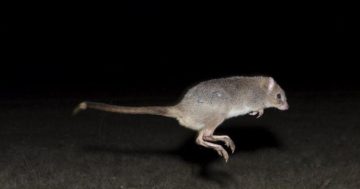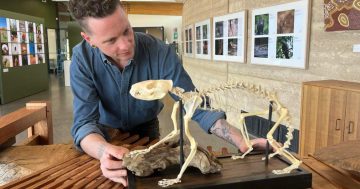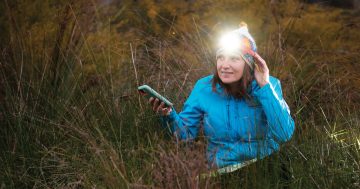
For ANU researcher Belinda Wilson, dawn at Mulligans Flat is the perfect time to get up close and personal with an eastern quoll. Photo: Madeleine Tranter Creative.
In some parts of the country, they’re considered to be an endangered species, but at Canberra’s Mulligans Flat sanctuary, eastern quolls are thriving.
It’s all thanks to a team of researchers from the Australian National University (ANU) – but also the quolls themselves which have welcomed newcomers to their sanctuary in a move that has delighted the humans who study them.
Lead author Dr Belinda Wilson, of the Fenner School of Environment and Society at the ANU, said GPS tracking collars had revealed how well newly reintroduced eastern quolls were settling in at Mulligans Flat, with quolls who were born at the sanctuary accepting their new neighbours with open paws.
Dr Wilson and her team placed tiny GPS collars on eight newcomers and eight resident quolls. This provided invaluable data on how the quolls moved throughout the landscape and how they interacted with each other.
“While the new quolls initially moved around the entirety of Mulligans Flat, over time the distances they travelled became smaller and they settled into similar-sized home ranges to the residents, possibly because of the ‘anchoring’ effect of their neighbours,” Dr Wilson said.
She said eastern quolls – carnivorous marsupials – became extinct on the Australian mainland in the 1960s. But in a partnership between the ANU, ACT Government and the Woodlands and Wetlands Trust, they were reintroduced into Mulligans Flat in 2016.
Since then, Dr Wilson said, the program to increase numbers of the tiny marsupial had been encouraging, so much so that the population at Mulligans Flat had reached capacity.
“We’re full to the brim,” she said, “which is great news.
“The GPS collars we use are specific to this study,” she said. “We do a yearly census of them putting out cages with their favourite bait in them – sardines.”
How did the researchers settle on sardines as the best bait? They tried everything else, from mangoes to rotten meat.
“The rotten meat even had wrigglers in it so we were really glad that they preferred sardines,” Dr Wilson said.
The researchers checked the traps later and microchipped the quolls before releasing them again.
“The trackers show how the original quolls and the newcomers are interacting,” Dr Wilson said.
There was some initial concern that they might not get on, but that proved to be wrong with Dr Wilson saying the new and the older had proved to be very sociable. “We even found seven of them together in the one den,” she said. “We ended up calling it the ‘megaden’.
“We were tracking a total of 16 at the time so when we found around half in the den, it made my job so much easier that day. It really was next level.”

An eastern quoll (Dasyurus viverrinus/Murrunguny) at the annual bettong monitoring session at Mulligans Flat. Photo: Tracey Nearmy, Australian National University.
Dr Wilson said with the number of breeding size adult quolls now estimated to live at Mulligans Flat between 50 and 60, the sanctuary could afford to relocate quolls to other such safe places.
“It’s the value of having a place like Mulligans Flat where these animals are protected from predators. The species is still endangered in some parts of the country, but because the program is so successful here, we can afford to give some to other sanctuaries we are in partnership with so we make sure there is a good genetic mix.”
Dr Wilson, who has been working with quolls since 2017, said they continued to fascinate her no matter how often she came across them in their natural habitat.
“Every time I see one it’s a novelty for me because they live fast and die fast,” she said. “They only live for two to three years. They breed lots of babies so hopefully they make it to the breeding period, but there are high mortality rates in their first few years.
“As we manage the population and bring ‘fresh blood’ into the sanctuary to avoid inbreeding, we’ll also send some of our extra quolls to our sister sanctuaries – that way Mulligans Flat can contribute to eastern quoll recovery across Australia’s growing network of sanctuaries.”
Citizen scientists can see the quolls for themselves – as well as other critters – by joining a Twilight Tour at Wildbark Learning Centre at Mulligans Flat.
















